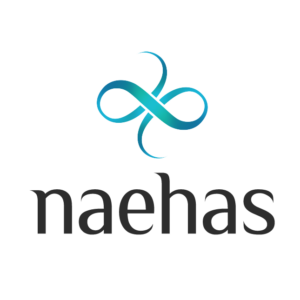It’s that time of year, when students return to school, bank martech leaders head to the American Bankers Association (ABA) Bank Marketing Conference, and the Federal Reserve’s FOMC reconvenes to discuss the economy, rates and ways to fight inflation. As summer comes to a close and the end of year is in sight, banks’ product managers and marketing teams continue to wrestle with ways to retain and engage customers. Establishing efficiencies to enhance offer management and retain customers are marketing musts.
My colleague and I recently had a deep-dive discussion with our top executives. Their insights into trends and tech for banks are always useful, and worth the share, as we do here.
On Retention, Rewards and Risk
While change is the only constant, clearly one thing remains the same: bank executives’ aversion to risk. Understandably so. With increased market volatility comes added concern.
The heightened concerns around risk management are a combined result of multiple Prime Rate changes from the Federal Reserve, regulatory compliance demands, and increased competition from fintech firms, among other global challenges the country faces. Compounding those worries is the growing focus on customer satisfaction in a fast-changing banking landscape.
 These past couple of years have seen a dramatic digital transformation in financial services. While that is definitely positive, it’s also exacerbating the problems inherent in a dynamic customer environment. The customer experience continues to change and, so, too, should banks’ abilities to provide exceptional service, meeting them where they are, when they need it. This is much easier said than done for many banks whose systems, and overwhelmed staff, have yet to catch up with the pace of change.
These past couple of years have seen a dramatic digital transformation in financial services. While that is definitely positive, it’s also exacerbating the problems inherent in a dynamic customer environment. The customer experience continues to change and, so, too, should banks’ abilities to provide exceptional service, meeting them where they are, when they need it. This is much easier said than done for many banks whose systems, and overwhelmed staff, have yet to catch up with the pace of change.
Customer Retention
With so many offers being developed and delivered by various product managers in an enterprise, the process of keeping up with dynamic offers, rate changes and customers is more complicated than ever. Offer management and fulfillment each benefit from innovative platform technology that supports customer retention goals, while reducing both cycle time and risk.
As experts who regularly connect with leaders from banks of all sizes, our management team has heard common themes from executives. They all remain hyper-focused on risk avoidance, regulatory compliance, and now the increasing complexities of customer retention.
The general business consensus has always been that it is easier to keep an existing customer than find a new one. In banking today, more than ever, retention is a top priority. The reality that customers have more options, and more places – virtual as they may be – to take their money and their accounts, creates a very real struggle. As a result, more incentives are put into play. While making these offers is challenging enough, maintaining them has become a heavy lift for banks.
Offer Management Marketing for Multi-Relationship Customers
The primary focus factors on offer management for banks are growth, retention and engagement. Common questions:
- How do I acquire more customers cost efficiently?
- How do I get to retain my current customers with relationship-based offers and get them engaged with the product, start using it and using it more?
- How can I retain them if they are using the product?
- How can you get to the top of their wallet and get them to use it?
As competition for the customer’s loyalty grows, so, too, do acquisition offers, cross-selling to an existing customer. The messaging to the customer is this: If you open an account, you receive money. Plus, from that account, the bank can set up auto pay. This promotes the customer to move money into the new checking account and then connect that account with a new credit card, essentially focused on getting usage going. This is the logical, progressive behavior banks want to create to drive engagement and retention.
That said, it is not enough for someone to open a checking account or get a new credit card through the bank. If they open an account and move no money into it, it costs the bank money. They received no assets nor fees. The reason these offers are so complicated is that the bank does not make money unless someone does the other part for them. Same with existing cards and retention. So this drives the banks to increasingly establish incentives to put money into those new accounts. If a credit card is not getting used it is costing them money.
For financial products, usage is as critical. No usage means the customer is costing them money.
How Banks Lose Money on Offers, and How Not To
In many instances, we’re learning of banks who admit that they often give away rewards to appease the customer. If a new credit card account was established online, and a certain reward program established, that customer wants to know the status of their account, and especially of that “special offer” they were promised. When that customer walks into their local bank branch for answers, the teller is often unable to access that status report and, more often than not, proceeds to give the customer said reward to keep the proverbial peace. Day in and day out, the urge to appease the customer, even if it means giving away money prematurely, might work in avoiding customer complaints to the CFPB, but it definitely does not work for the product/segment manager who just lost money on that customer retention program.
In one instance, a bank executive noted that he believed that while 70% of their offers were getting converted, only 30% were meeting the pre-established and promoted stipulations. That means the bank is simply giving away money nearly 40% of the time. The explanation was that, with no visibility to the customer journey, it would cost the bank more money to figure out where the customer stands than to just make the transaction and keep the customer satisfied. Basically, if or when a customer calls, they just give them the money.
This is a pattern emerging in banking that sets a path for revenue loss, as banks are paying out offers without getting the value. What’s the solution? Innovate and automate to establish an offer management program that covers the entire lifecycle, particularly by gaining visibility with a fulfillment program that helps banks answer those “what’s my status?” questions and stop giving money away.
 Platforms are increasingly capable of becoming marketing force multipliers, allowing both banks and their customers to benefit from a growing relationship. Fulfillment service capabilities are a significant differentiating factor for banks considering how best to leverage technology to get and stay ahead. Better products and better pricing – which reflect the value of the customer relationship – make for a better customer experience overall.
Platforms are increasingly capable of becoming marketing force multipliers, allowing both banks and their customers to benefit from a growing relationship. Fulfillment service capabilities are a significant differentiating factor for banks considering how best to leverage technology to get and stay ahead. Better products and better pricing – which reflect the value of the customer relationship – make for a better customer experience overall.
As an example, the Naehas product allows a bank to communicate with the customer and remind them that they have X number of days to get money into that account and get your bonus. Using the Naehas Offer Management and Offer Fulfillment systems, which provide visibility anywhere at any time, they can quickly look at it and understand where the customer is.
The customer gets paid on time, during the process they are notified as to where they stand, and if they call support or ask someone in the bank, they automatically know where the offer is.
The result: This boosts the customer experience, which is critical.
Improving customer service is the cornerstone of any bank’s digital transformation journey. The ability of cloud-based platforms to deliver these benefits is a game changer for banks moving forward. Increasingly, establishing real-time visibility into the status of an offer is proving to be clutch in retaining customers. When you add in security and scalability requirements, it’s clear to see why more banks are reaching out to leverage this powerful, proven platform technology.
Benefits of Cloud-based Offer Management Platforms
- Increased customer retention and engagement
- Improved customer experiences
- Reduced Risk
- Efficient Employee experiences and processes
- Faster time to market
- Increased revenue opportunities
 The cloud-based software offers a way to prioritize the customer experience in a way that helps banks stay competitive as fintech continues to tempt customers to opt-out of traditional banking. Another notable feature is the platform’s ability to reduce reliance on IT support for offer creation and delivery. This, as our partner relationship teams hear often, is critical in cutting cycle time.
The cloud-based software offers a way to prioritize the customer experience in a way that helps banks stay competitive as fintech continues to tempt customers to opt-out of traditional banking. Another notable feature is the platform’s ability to reduce reliance on IT support for offer creation and delivery. This, as our partner relationship teams hear often, is critical in cutting cycle time.
Driving customer satisfaction and enabling purposely-built cloud platforms to drive customer retention are essential components for banks managing offers and fulfillment in today’s complex and competitive market during yet another season of change.







